II: History of the Peignot Typefoundry
At approximately the same time that Alexandre Deberny took sole control of his typefoundry in 1840, a foundry of metal ingots was started by René Leclerc in Paris.[13] After a series of successions, buy-outs, and deaths, this small foundry came up for public auction circa 1868. Gustave Peignot (1839-1899) borrowed some money from his godmother and purchased the foundry with the intention of manufacturing characters. He first set up shop on Rue Domat in the fifth arrondisement in Paris, and soon after on Boulevard Edgar-Quinet in the Montparnasse district.[14]
Gustave Peignot began a policy of acquiring the typeface stocks of failed French companies. In 1881, he bought the contents of the Longien foundry, successor to the Petitbon foundry. In 1892, he also pounced upon the remains of the Cochard and David foundries. A year before his death in 1899, Gustave Peignot formally associated his five sons into the family trade, thus calling it "G. Peignot et Fils."[15]
The G. Peignot et Fils era was commercially successful until its tragic and premature ending. Georges Peignot (1872-1915), the second-eldest son, led the firm in aesthetic and business decisions that proved extremely lucrative in what was then the Art Nouveau period in France. According to typographer Maximilien Vox, Georges was "the first French typographer who did not think of his job as confined to supplying the printer with little pieces of metal."[16]
From 1900 to 1914, Georges' primary interest was to create faces that were indicative of the new century. He did so by commissioning the artist Eugène Grasset (1841-1917) to design "Grasset," a face that would be an international success through exposure at the World Exposition of 1900.[17] Georges also worked with Georges Auriol (1863-1938) to realize the Nouveau typefaces "Auriol" and "Robur." "Auriol" is most notably seen today in the signage that marks staircases leading down to the Paris Métro line. Following his father's trend, Georges purchased the punches of the Fonderie Générale in 1912, thereby acquiring the historic "Didot" faces. The following year, the company released the "Cochin" and "Moreau-le-Jeune" faces that revived the popularity of eighteenth century letterforms such as those originally created by Nicolas Cochin.[18] The firm also began modern recuttings of the Imprimèrie Nationale's "Garamond," which was based upon Jean Jannon's seventeenth-century interpretation of Claude Garamond's sixteenth century work (figs. 4-9).[19]
Unfortunately, the prosperity of the foundry was stultified by World War I. Military service called four of the surviving five brothers; (the eldest, Robert, had died in 1913 due to poor health). The four Peignot brothers all perished during a period of two years. André Peignot, an infantry officer, first succumbed in 1914. Georges and Rémy Peignot were killed in 1915. Lucien Peignot died in 1916 from sickness at the front. The memory of the brothers was commemorated by naming a Parisian street in their honor: Rue Quatre Frères Peignot.[20] The street is still a tribute to the Peignot brothers in present day Paris, coincidentally located in an area not far from France's great Imprimerie Nationale (fig. 10).
Henri Menut directed G. Peignot et Fils in the absence of Georges Peignot, and until a Peignot heir was old enough to run the business. During the War, Menut purchased the Doublet foundry's characters. Menut also capitalized on circumstances of ruin by buying the surviving "Baskerville" punches from the Bertrand Foundry. Upon the final demise of all of the Peignot brothers in 1916, Menut changed the name of the firm to "Peignot et Cie.,"—its last moniker until 1923 when Deberny et Peignot was formed (fig. 11).[21]
Figures
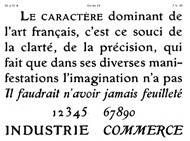
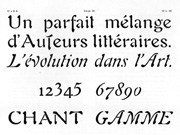

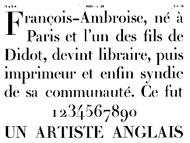
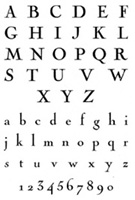


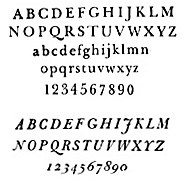
Page Notes
13 Fonderies Deberny & Peignot, n.p.
14 "Deberny et Peignot: La Belle Époque de la Typographie," 39.
15 "Deberny et Peignot: La Belle Époque de la Typographie," 39.
16 Stephen Heller, "The Man Behind the Face," Print 40 (March-April 1986), 61.
17 Fonderies Deberny & Peignot, n.p.
18 "Deberny et Peignot: La Belle Époque de la Typographie," 41.
19 Sebastian Carter, Twentieth Century Type Designers (New York: W.W. Norton & Company, 1995), 162.
20 "Deberny et Peignot: La Belle Époque de la Typographie," 42.
21 "Deberny et Peignot: La Belle Époque de la Typographie," 42.